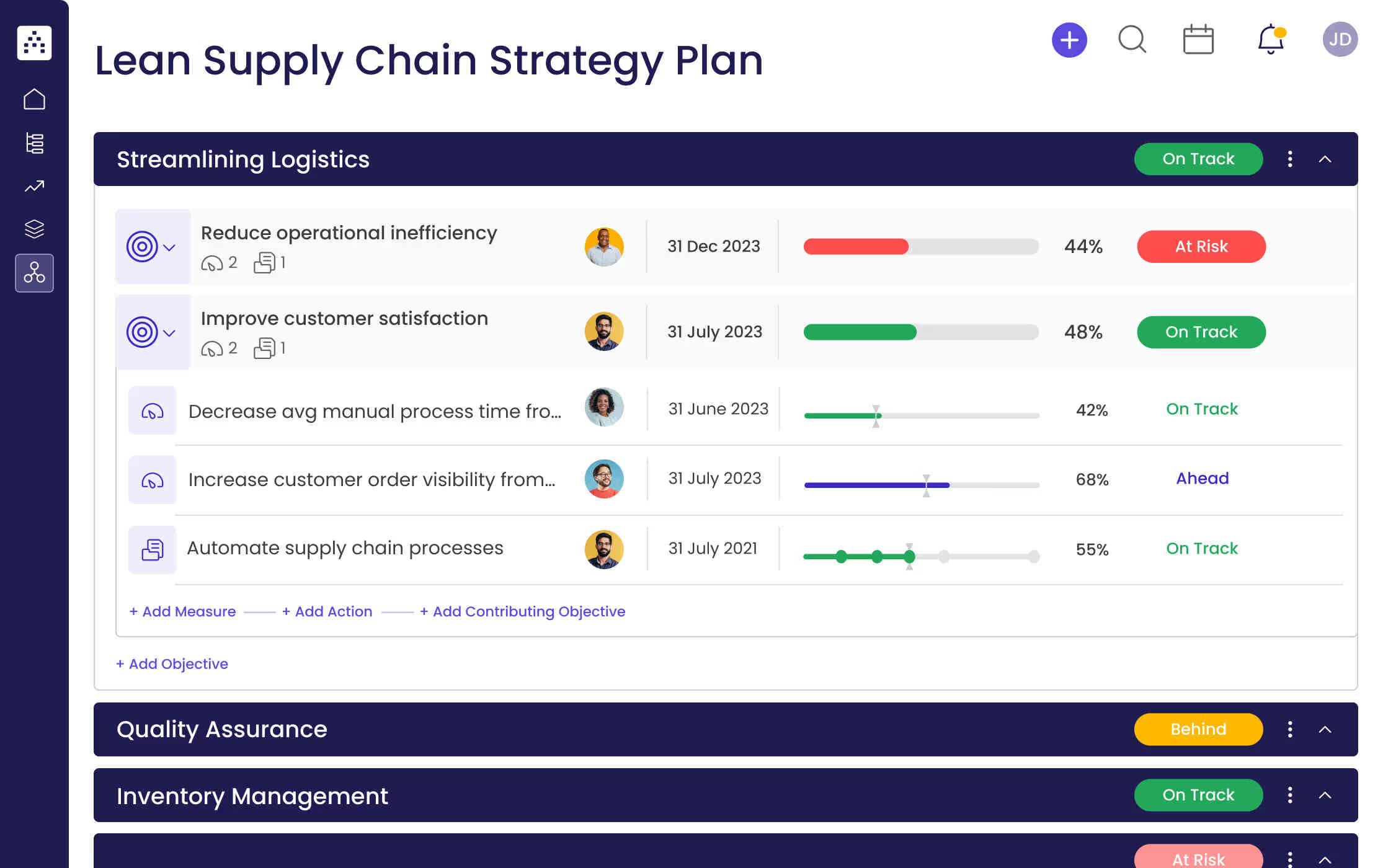What is a Lean Supply Chain Strategy?
A lean supply chain strategy is a process of streamlining and optimizing supply chain operations to increase efficiency and reduce waste. It involves identifying areas of improvement, setting objectives and measurable targets, and implementing projects to achieve those targets. Lean supply chain strategies focus on optimizing processes, reducing waste, and increasing customer satisfaction.
What's included in this Lean Supply Chain Strategy template?
- 3 focus areas
- 6 objectives
- 6 projects
- 6 KPIs
Each focus area has its own objectives, projects, and KPIs to ensure that the strategy is comprehensive and effective.
Who is the Lean Supply Chain Strategy template for?
The Lean Supply Chain Strategy Template is designed for supply chain management teams to use in order to develop strategies for lean supply chain management. With the template, teams can develop a comprehensive plan that helps to identify areas of improvement, set objectives, and measure progress.
1. Define clear examples of your focus areas
The Lean Supply Chain Strategy Template includes three focus areas: streamlining logistics, quality assurance, and inventory management. Each focus area can be broken down into objectives, actions, and measurable targets (KPIs). Teams should define clear examples for each focus area in order to develop a comprehensive plan.
2. Think about the objectives that could fall under that focus area
For each focus area, teams should think about objectives that could fall under that focus area. These objectives should be specific, measurable, and achievable, and should be related to the overall goal of streamlining and optimizing supply chain operations. Examples of some objectives for the focus area of Streamlining Logistics could be: Reduce operational inefficiency, and Improve customer satisfaction.
3. Set measurable targets (KPIs) to tackle the objective
Once objectives have been identified, teams should set measurable targets, or KPIs, to tackle the objectives. KPIs should be specific, measurable, achievable, and time-bound, and should be related to the objectives and focus areas identified. An example of a KPI for the focus area of Streamlining Logistics could be: Decrease avg manual process time from 1.5h to 0.5h.
4. Implement related projects to achieve the KPIs
In order to achieve the KPIs, teams should implement related projects. Projects should be related to the objectives and focus areas identified, and should be designed to help teams achieve their KPIs. An example of a project related to Streamlining Logistics could be: Automate supply chain processes.
5. Utilize Cascade Strategy Execution Platform to see faster results from your strategy
Cascade Strategy Execution Platform helps teams to develop, implement, and track their strategies. With the platform, teams can easily define objectives, set targets, and track progress toward reaching their goals, helping them to achieve faster results from their strategy.


